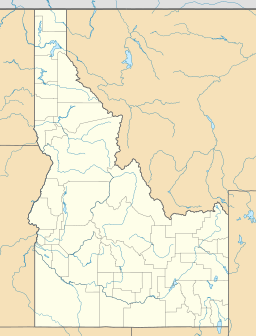Gentian Lake facts for kids
Quick facts for kids Gentian Lake |
|
|---|---|
| Location | Custer County, Idaho |
| Coordinates | 44°05′50″N 114°36′43″W / 44.097145°N 114.612036°W |
| Lake type | Glacial |
| Primary outflows | Big Boulder Creek to East Fork Salmon River |
| Basin countries | United States |
| Max. length | 100 m (330 ft) |
| Max. width | 80 m (260 ft) |
| Surface elevation | 3,060 m (10,040 ft) |
Imagine a hidden gem high up in the mountains! That's Gentian Lake, a beautiful alpine lake located in Idaho, in a place called Custer County. It's part of the amazing White Cloud Mountains, which are inside the Sawtooth National Recreation Area.
This lake is a bit of a secret because there aren't any direct trails leading right to it. But if you're up for an adventure, you can reach it by following Sawtooth National Forest trail 601. Gentian Lake sits near D. O. Lee Peak and is connected to other cool lakes like Cove Lake, Boulder Lake, and Snow Lake.
Discovering Gentian Lake
Gentian Lake is a special kind of lake called a glacial lake. This means it was formed a very long time ago by giant sheets of ice, called glaciers. As these glaciers moved, they carved out the land, leaving behind deep hollows that later filled with water.
Where is Gentian Lake Located?
Gentian Lake is found in the central part of Idaho. It's nestled high up in the White Cloud Mountains, which are a part of the larger Sawtooth National Recreation Area. This area is known for its stunning natural beauty and rugged landscapes.
Getting to the Lake
Even though there isn't a direct path, you can still visit Gentian Lake! Adventurers can hike to the lake by using Sawtooth National Forest trail 601. This trail offers a challenging but rewarding journey through the wilderness.
Lake Details
Gentian Lake is quite high up, sitting at an elevation of about 3,060 meters (or about 10,040 feet) above sea level. It's not a huge lake, measuring around 100 meters (about 328 feet) long and 80 meters (about 262 feet) wide.
The lake's water flows out into Big Boulder Creek, which then joins the East Fork Salmon River. This river eventually becomes part of the larger Salmon River system in Idaho.



